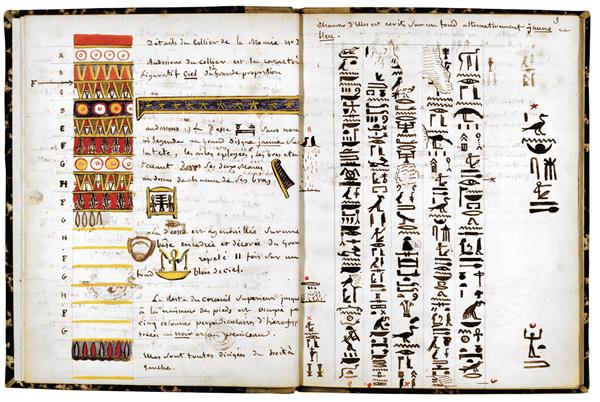
Two hundred years ago, on September 14, 1822, Jean-François Champollion (1790–1832) cracked the code of the Egyptian hieroglyphic script and the language behind it. After two years of copying and studying various inscriptions, the French schoolteacher uttered the famous, “Je tiens l’affaire” (I’ve got it!), before fainting from exhaustion and excitement. The first word he could read was the royal name Ramesses. He was then able to make rapid progress, but his Egyptian Grammar appeared only posthumously.
The last known hieroglyphic inscription was carved in 394 C.E., and successive generations in Egypt and elsewhere viewed hieroglyphs as purely allegorical signs of unknown mystical meaning. Champollion’s discovery proved that, although some hieroglyphic signs stand for entire words and ideas, they mostly represent sounds (syllables or single letters), and the language of hieroglyphic inscriptions is an ancestor to Coptic, which is used to this day by the Coptic Orthodox Church. What gave Champollion the edge over his unsuccessful predecessors was the recent discovery, in 1799, of the Rosetta Stone, which contains the same text in Egyptian and Greek (see “Text Treasures: The Rosetta Stone: Key to Egyptian Hieroglyphs”).
Essential to uncovering the ancient Egyptian civilization, the ability to read Egyptian language ushered a new scholarly discipline—Egyptology.
Already a library member? Log in here.
Institution user? Log in with your IP address.

